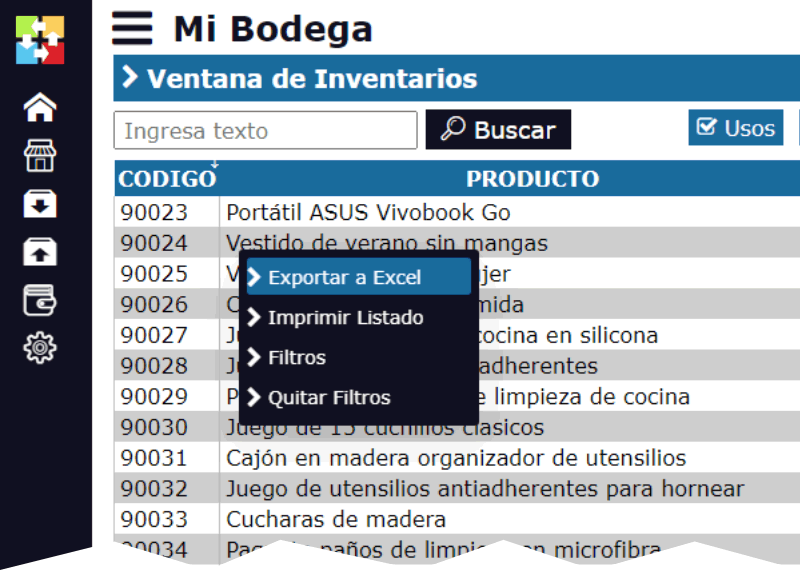What is an Inventory and How is it Made?
The inventory is a fundamental tool for any business that handles products or goods, as it allows for a detailed control of stock levels and their value. Having an updated inventory helps you manage resources adequately, optimize purchases, and avoid shortages or excess stock. Below, we explain what an inventory is and how you can create one in a practical way, even using simple tools like Excel.

What is an Inventory?
An inventory is a detailed list of the products or goods that a company or person possesses at a given time. This document includes information such as the quantities of each item, their unit and total value, the state of the products (new, used, damaged), and may include other details such as the serial number or barcode.
Steps to Create an Inventory in Excel
One of the most accessible methods for keeping an inventory is using an Excel spreadsheet. This tool allows you to customize the format of your inventory and automate some calculations. Here's a guide to create your inventory from scratch:
Open an Excel Sheet: Start a new document in Excel. In the first row, define the headers of the columns you'll use for your inventory. Some of the most common ones are:
- Product code
- Product description
- Category
- Quantity
- Unit cost
- Total value
- Location (if you have multiple warehouses)
Enter Product Information: In the following rows, start entering the products you have in your warehouse or business. Each row will represent a different product. If you use barcodes, it's recommended that you enter this information in the product code column, as it speeds up searches and control.
Create Automatic Formulas: To avoid calculation errors, you can use automatic formulas in Excel. For example, in the "Total value" column, you can enter the formula that multiplies the unit cost by the quantity of products (
=QUANTITY * UNIT_COST).Review and Update: It's essential that the inventory is reviewed and updated regularly, especially if you make purchases or sales of products. You can add an extra column for the "Review date" to keep track of when you last updated that product.
Tips for Counting Products
Counting your products correctly is essential for maintaining an accurate inventory. Here are some practical tips to avoid common errors:
Organize the Physical Space: Before starting to count, make sure the products are organized. This facilitates the process and prevents items from being omitted or counted twice.
Divide by Categories: If you have many products, it's recommended to divide them by categories (e.g., clothing, food, electronics). This makes the count easier and more organized.
Use Barcodes: If your products have barcodes, using a scanner will save you a lot of time and reduce errors. Make sure each product is scanned correctly.
Avoid Duplicate Counts: When counting, mark or remove the products you've already counted to avoid counting the same thing twice. It's also useful to do counts by parts or sections.
Count Record: Use a physical or digital count sheet to note the quantity of each product you're counting. If you work in a team, make sure everyone follows the same format to avoid confusion.
Verify the Count: Once you've finished, review your records to ensure you haven't omitted any products or duplicated information. If possible, assign a second person to verify the count.
Other Precautions
Quality Control: In addition to counting products, check their condition. This is important if you handle perishable or delicate products. This way, you can remove damaged or expired items and avoid future problems.
Integration with Software: If your inventory grows, you may consider integrating specialized inventory software that connects directly with your sales or purchasing systems, making management even easier.
Conclusion
Maintaining an updated and well-organized inventory is vital for any company that handles products. With tools like Excel and following the steps mentioned, you can create a basic and efficient inventory. Remember that the success of a good inventory lies in the accuracy and regularity of the count, as well as the continuous review of the information you manage.





